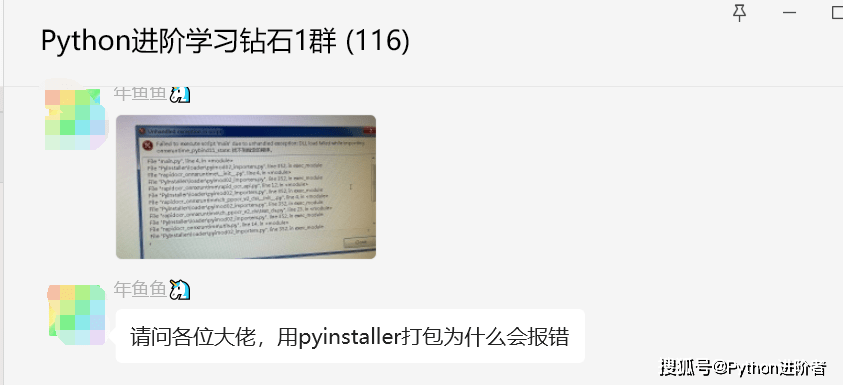Python构建高效安全的OTP验证系统!
译者 | 布加迪
审校 | 重楼
即使您的密码被盗,OTP验证系统也可以充当安全的关键要素。它让您无需记住密码,充当额外的安全层,并降低了网络钓鱼的风险。
不妨学习用Python/ target=_blank class=infotextkey>Python建立一个OTP验证系统,它会向您的手机号码发送一个OTP,有效期只有两分钟,如果您连续三次输错OTP,账户会被锁住。
安装Tkinter、Twilio和Random模块
Tkinter允许您创建桌面应用程序。它提供了各种小组件,比如按钮、标签和文本框,使开发应用程序变得更容易。
Twilio模块帮助您把短信、彩信和电话呼叫等通信功能与验证径直整合到应用程序中。它有一个基于云的基础设施,以及令人惊叹的功能,比如号码配置、消息模板和呼叫记录。
要安装Twilio模块和Tkinter模块,在终端执行如下命令:
pip install twilio tk
Random模块是内置的Python模块,用于生成伪随机数。有了该模块,您可以生成随机数、从列表中选择随机元素、打乱列表内容等。您可以用它来构建掷骰子模拟、列表打乱器或随机密码生成器。
生成Twilio API并获取电话号码
要使用Twilio并向您的手机发送OTP请求,您需要身份验证凭据以及Twilio电话号码。为此:
1. 注册一个Twilio账户,访问Twilio控制台。
2. 向下滚动并点击“获取电话号码”按钮。复制已生成的电话号码。

3. 向下滚动到“账户信息”部分。复制“账户SID”和“身份验证令牌”。

构建应用程序的结构
事先声明一下,您可以在这个Github代码仓库中找到使用Python构建OTP验证系统的完整源代码。
导入必要的模块,并设置身份验证凭据。初始化Twilio客户软件以验证身份,并作为API调用的入口点。将到期失效时间设为两分钟。
定义一个类:OTPVerification,并初始化构造函数以设置变量的默认值,同时初始化根窗口,并设置应用程序的标题和维度。
import tkinter as tk
from tkinter import messagebox
from twilio.rest import Client
import random
import threading
import time
account_sid = "YOUR_ACCOUNT_SID"
auth_token = "YOUR_AUTH_TOKEN"
client = Client(account_sid, auth_token)
expiration_time = 120
class OTPVerification:
def __init__(self, master):
self.master = master
self.master.title('OTP Verification')
self.master.geometry("600x275")
self.otp = None
self.timer_thread = None
self.resend_timer = None
self.wrong_attempts = 0
self.locked = False
self.stop_timer = False
定义三个标签来请求手机号码和OTP,并在程序发送OTP后显示计时器。设置父元素、它应该显示的文本以及该有的字体样式。同样,创建两个输入小组件以获取用户输入。设置父元素、宽度和字体样式。
创建三个按钮来发送OTP、重新发送OTP和验证OTP。设置父元素、它应该显示的文本、点击时执行的命令及其字体样式。使用pack方法组织这些元素。
self.label1 = tk.Label(self.master,
text='Enter your mobile number:',
fnotallow=('Arial', 14))
self.label1.pack()
self.mobile_number_entry = tk.Entry(self.master,
width=20,
fnotallow=('Arial', 14))
self.mobile_number_entry.pack()
self.send_otp_button = tk.Button(self.master,
text='Send OTP',
command=self.send_otp,
fnotallow=('Arial', 14))
self.send_otp_button.pack()
self.timer_label = tk.Label(self.master,
text='',
fnotallow=('Arial', 12, 'bold'))
self.timer_label.pack()
self.resend_otp_button = tk.Button(self.master,
text='Resend OTP',
state=tk.DISABLED,
command=self.resend_otp,
fnotallow=('Arial', 14))
self.resend_otp_button.pack()
self.label2 = tk.Label(self.master,
text='Enter OTP sent to your mobile:',
fnotallow=('Arial', 14))
self.label2.pack()
self.otp_entry = tk.Entry(self.master,
width=20,
fnotallow=('Arial', 14))
self.otp_entry.pack()
self.verify_otp_button = tk.Button(self.master,
text='Verify OTP',
command=self.verify_otp,
fnotallow=('Arial', 14))
self.verify_otp_button.pack()
构建应用程序的功能
定义一个方法start_timer(),它在单独的线程中运行timer_countdown。
def start_timer(self):
self.timer_thread = threading.Thread(target=self.timer_countdown)
self.timer_thread.start()
定义一个方法timer_countdown()。记录开始时间,并运行一个无限循环,该循环获取当前时间并计算已流逝的时间和剩余时间。如果stop_timer为true,终止循环。如果剩余时间小于或等于0,显示错误消息框,表明OTP已过期。
激活重新发送OTP按钮,将OTP设置为none,并终止。否则,计算剩余的分钟和秒,将其显示在计时器标签上,并休眠一秒钟。
def timer_countdown(self):
start_time = time.time()
while True:
current_time = time.time()
elapsed_time = current_time - start_time
remAIning_time = expiration_time - elapsed_time
if self.stop_timer:
break
if remaining_time <= 0:
messagebox.showerror('Error', 'OTP has expired.')
self.resend_otp_button.config(state=tk.NORMAL)
self.otp = None
break
minutes = int(remaining_time // 60)
seconds = int(remaining_time % 60)
timer_label = f'Time Remaining: {minutes:02d}:{seconds:02d}'
self.timer_label.config(text=timer_label)
time.sleep(1)
定义一个方法send_otp()。如果locked为true,显示相应的消息。否则提取并验证电话号码,生成一个随机的OTP。提供之前获取的手机号码,使用客户软件将OTP发送到您的电话号码。显示消息框,启动计时器,禁用按钮,并完全清除输入内容。
def send_otp(self):
if self.locked:
messagebox.showinfo('Account Locked', 'Your account is locked. Try again later.')
return
mobile_number = self.mobile_number_entry.get()
if not mobile_number:
messagebox.showerror('Error', 'Please enter your mobile number.')
return
self.otp = random.randint(1000, 9999)
message = client.messages.create(
body=f'Your OTP is {self.otp}.',
from_='TWILIO_MOBILE_NUMBER',
to=mobile_number
)
messagebox.showinfo('OTP Sent', f'OTP has been sent to {mobile_number}.')
self.start_timer()
self.send_otp_button.config(state=tk.DISABLED)
self.resend_otp_button.config(state=tk.DISABLED)
self.otp_entry.delete(0, tk.END)
def send_otp(self):
if self.locked:
messagebox.showinfo('Account Locked', 'Your account is locked. Try again later.')
return
mobile_number = self.mobile_number_entry.get()
if not mobile_number:
messagebox.showerror('Error', 'Please enter your mobile number.')
return
self.otp = random.randint(1000, 9999)
message = client.messages.create(
body=f'Your OTP is {self.otp}.',
from_='TWILIO_MOBILE_NUMBER',
to=mobile_number
)
messagebox.showinfo('OTP Sent', f'OTP has been sent to {mobile_number}.')
self.start_timer()
self.send_otp_button.config(state=tk.DISABLED)
self.resend_otp_button.config(state=tk.DISABLED)
self.otp_entry.delete(0, tk.END)
定义一个方法resend_otp()。如果锁住,显示相应的消息。否则获取并验证电话号码,重新生成随机的OTP,重新发送OTP,显示消息框,启动计时器,并禁用重新发送OTP按钮。
def resend_otp(self):
if self.locked:
messagebox.showinfo('Account Locked', 'Your account is locked. Try
again later.')
return
mobile_number = self.mobile_number_entry.get()
if not mobile_number:
messagebox.showerror('Error', 'Please enter your mobile number.')
return
self.otp = random.randint(1000, 9999)
message = client.messages.create(
body=f'Your OTP is {self.otp}.',
from_='TWILIO_MOBILE_NUMBER',
to=mobile_number
)
messagebox.showinfo('OTP Sent', f'New OTP has been sent to {mobile_number}.')
self.start_timer()
self.resend_otp_button.config(state=tk.DISABLED)
定义一个方法verify_otp()。获取OTP,并检查用户是否没有输入任何内容。如果存储的OTP为None,要求用户先生成OTP。如果用户输入的OTP与存储的OTP匹配,显示OTP验证成功,停止计时器,并退出程序。否则检查错误的输入尝试。如果输错次数超过3次,锁住账户。
def verify_otp(self):
user_otp = self.otp_entry.get()
if not user_otp:
messagebox.showerror('Error', 'Please enter OTP.')
return
if self.otp is None:
messagebox.showerror('Error', 'Please generate OTP first.')
return
if int(user_otp) == self.otp:
messagebox.showinfo('Success', 'OTP verified successfully.')
self.stop_timer = True
exit()
else:
self.wrong_attempts += 1
if self.wrong_attempts == 3:
self.lock_account()
else:
messagebox.showerror('Error', 'OTP does not match.')
定义一个方法lock_account()。设置锁住状态为true,显示标签为“账户已锁住”。禁用所有标签、条目和按钮。停止现有的计时器,启动新的计时器(10分钟)。
def lock_account(self):
self.locked = True
self.label1.config(text='Account Locked')
self.mobile_number_entry.config(state=tk.DISABLED)
self.send_otp_button.config(state=tk.DISABLED)
self.timer_label.config(text='')
self.resend_otp_button.config(state=tk.DISABLED)
self.label2.config(text='')
self.otp_entry.config(state=tk.DISABLED)
self.verify_otp_button.config(state=tk.DISABLED)
self.stop_timer = True
countdown_time = 10 * 60
self.start_countdown(countdown_time)
定义一个方法start_countdown()。如果剩余时间小于等于0,重置账户。否则显示程序已锁住账户,并在剩余时间内使用回调再试一次。
def start_countdown(self, remaining_time):
if remaining_time <= 0:
self.reset_account()
return
minutes = int(remaining_time // 60)
seconds = int(remaining_time % 60)
timer_label = f'Account Locked. Try again in:
{minutes:02d}:{seconds:02d}'
self.timer_label.config(text=timer_label)
self.master.after(1000, self.start_countdown, remaining_time - 1)
定义一个函数reset_account()。像前面一样重置所有小组件和变量的状态。
def reset_account(self):
self.locked = False
self.wrong_attempts = 0
self.label1.config(text='Enter your mobile number:')
self.mobile_number_entry.config(state=tk.NORMAL)
self.send_otp_button.config(state=tk.NORMAL)
self.timer_label.config(text='')
self.resend_otp_button.config(state=tk.DISABLED)
self.label2.config(text='Enter OTP sent to your mobile:')
self.otp_entry.config(state=tk.NORMAL)
self.verify_otp_button.config(state=tk.NORMAL)
self.stop_timer = False
创建根窗口和类的实例,并运行Tkinter应用程序。
if __name__ == '__main__':
root = tk.Tk()
otp_verification = OTPVerification(root)
root.mainloop()
使用OTP验证的输出示例
在运行OTP验证程序时,您会看到一个窗口,要求输入手机号码。输入手机号码以及所在国家代号,然后点击“发送OTP”按钮。您会收到一条消息,表明程序已成功发送OTP,按钮会停用两分钟。检查手机是否收到了OTP,并在过期前输入它。

在计时器过期前输入正确的OTP后,您将收到一条消息,表明程序已成功验证了OTP,退出程序。如果您没有及时输入,会收到消息框,表明OTP已过期。可以点击“重新发送OTP”按钮以生成新的OTP,并发送到您的手机。

如果您输错了OTP,程序将显示一个消息框,表明“OTP不匹配”。

如果OTP输错三次,所有字段将被禁用,账户将被锁住十分钟。

结合使用Twilio与Python
使用Twilio,您可以为各种事件构建短信通知系统。您可以将其与物联网设备一起使用,当设备的数值高于或低于某个阈值或者检测到入侵者时发送短信。您还可以构建具有双因素身份验证的安全登录系统,构建WhatsApp聊天机器人和约会提醒系统。
除此之外,您还可以用它进行电话号码验证、营销活动、发送调查表和收集反馈。在构建任何应用程序时,始终留意Twilio API的定价,以免遭遇意外成本。
原文标题:How to Build an OTP Verification System Using Python,作者:Sai Ashish Konchada



























